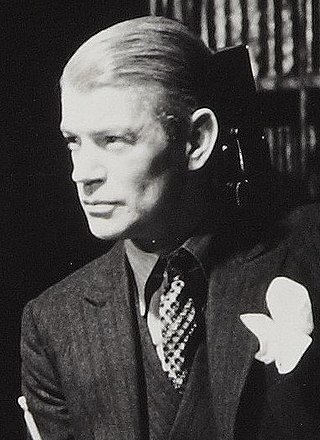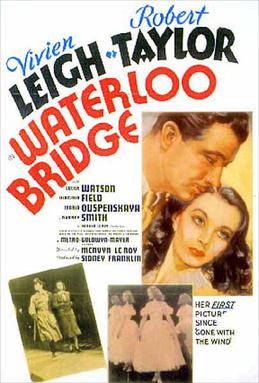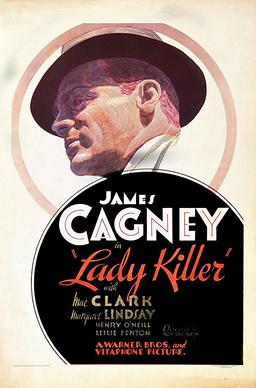
James Whale was an English film director, theatre director and actor, who spent the greater part of his career in Hollywood. He is best remembered for several horror films: Frankenstein (1931), The Old Dark House (1932), The Invisible Man (1933) and Bride of Frankenstein (1935), all considered classics. Whale also directed films in other genres, including the 1936 film version of the musical Show Boat.

William Wyler was a German-born American film director and producer. Known for his work in numerous genres over five decades, he received numerous awards and accolades, including three Academy Awards. He holds the record of twelve nominations for the Academy Award for Best Director. For his oeuvre of work, Wyler was awarded the Irving G. Thalberg Memorial Award, the Directors Guild of America Lifetime Achievement Award, and the American Film Institute Life Achievement Award.

Ruth Elizabeth "Bette" Davis was an American actress of film, television and theater. Regarded as one of the greatest actresses in Hollywood history, she was noted for her willingness to play unsympathetic, sardonic characters and was known for her performances in a range of film genres, from contemporary crime melodramas to historical and period films and occasional comedies, although her greatest successes were her roles in romantic dramas. She won the Academy Award for Best Actress twice, was the first person to accrue ten Academy Award nominations for acting, and was the first woman to receive a Lifetime Achievement Award from the American Film Institute. In 1999, Davis was placed second on the American Film Institute's list of the greatest female stars of classic Hollywood cinema.

Carl Laemmle Jr. was an American film producer - studio executive and heir of Carl Laemmle, who had founded Universal Studios. He was head of production at the studio from 1928 to 1936.

Robert Emmet Sherwood was an American playwright and screenwriter.

Mae Clarke was an American actress. She is widely remembered for playing Henry Frankenstein's bride Elizabeth, who is chased by Boris Karloff in Frankenstein, and for being on the receiving end of James Cagney's halved grapefruit in The Public Enemy. Both films were released in 1931.

The Old Dark House is a 1932 American pre-Code comedy horror film directed by James Whale. Based on the 1927 novel Benighted by J.B. Priestley, the film features an ensemble cast that includes Boris Karloff, Melvyn Douglas, Gloria Stuart, Charles Laughton, Lilian Bond, Ernest Thesiger, Raymond Massey and Eva Moore. Set in interwar Wales, the film follows five travellers who seek shelter from a violent storm in the decaying country house home of the eccentric Femm family.

Waterloo Bridge is a 1940 American drama film and the remake of the 1931 film also called Waterloo Bridge, adapted from the 1930 play Waterloo Bridge. In an extended flashback narration, it recounts the story of a dancer and an army captain who meet by chance on Waterloo Bridge in London. The film was made by Metro-Goldwyn-Mayer, directed by Mervyn LeRoy and produced by Sidney Franklin and Mervyn LeRoy. The screenplay is by S. N. Behrman, Hans Rameau and George Froeschel, based on the Broadway drama by Robert E. Sherwood. The music is by Herbert Stothart and cinematography by Joseph Ruttenberg.
Waterloo Bridge is a road and foot traffic bridge crossing the River Thames in London.

Gaby is a 1956 American drama film directed by Curtis Bernhardt and starring Leslie Caron, John Kerr, Cedric Hardwicke, Taina Elg and Margalo Gillmore. It is the third version of the 1930 play Waterloo Bridge, previously made into films Waterloo Bridge (1931) and Waterloo Bridge (1940). It is the only version of the play made in color, and the least faithful to it. The title, the names of the main characters, and plot details were all changed. Unlike the 1931 and 1940 versions, this film ends happily.

Bad Sister is a 1931 American pre-Code drama film directed by Hobart Henley. The screenplay by Edwin H. Knopf, Tom Reed, and Raymond L. Schrock is based on the 1913 novel The Flirt by Booth Tarkington, which had been filmed in 1916 and 1922.

Way Back Home is a 1931 American Pre-Code drama film directed by William A. Seiter and starring Phillips Lord, Effie Palmer, Frank Albertson, and Bette Davis. The screenplay by Jane Murfin is based on characters created for the NBC Radio show Seth Parker by Phillips Lord.

Hell's House is a 1932 American Pre-Code drama film starring Junior Durkin, featuring Bette Davis and directed by Howard Higgin. The screenplay by Paul Gangelin and B. Harrison Orkow, set during the waning days of the Prohibition era, is based on a story by Higgin.

Fashions of 1934 is a 1934 American pre-Code musical comedy film directed by William Dieterle with musical numbers created and directed by Busby Berkeley. The screenplay by F. Hugh Herbert and Carl Erickson was based on the story The Fashion Plate by Harry Collins and Warren Duff. The film stars William Powell, Bette Davis, Frank McHugh, Hugh Herbert, Verree Teasdale, and Reginald Owen, and features Henry O'Neill, Phillip Reed, Gordon Westcott, and Dorothy Burgess. The film's songs are by Sammy Fain (music) and Irving Kahal (lyrics). Sometime after its initial release, the title Fashions of 1934 was changed to Fashions, replacing the original title with an insert card stating "William Powell in 'Fashions'".

Ethel Griffies was an English actress of stage, screen, and television. She is remembered for portraying the ornithologist Mrs. Bundy in Alfred Hitchcock's classic The Birds (1963). She appeared in stage roles in her native England and in the United States, and had featured roles in around 100 motion pictures. Griffies was one of the oldest working actors in the English-speaking theatre at the time of her death at 97 years old. She acted alongside such stars as May Whitty, Ellen Terry, and Anna Neagle.

Lady Killer is a 1933 American pre-Code crime drama film starring James Cagney, Mae Clarke, and Margaret Lindsay, based on the story "The Finger Man" by Rosalind Keating Shaffer. The picture was directed by Roy Del Ruth.

Remember Last Night? is a 1935 American mystery comedy film directed by James Whale. The film, based on the novel The Hangover Murders, is about the investigation of the murder of one of a group of friends. The survivors are unable to recall the events of the night of the murder because they were all too drunk. Remember Last Night? features an ensemble cast headed by Edward Arnold, Constance Cummings, and Robert Young.

The Menace is a 1932 American pre-Code American crime drama film directed by Roy William Neill. The screenplay by Roy Chanslor, Dorothy Howell, and Charles Logue is based on the 1927 novel The Feathered Serpent by Edgar Wallace.
Waterloo Bridge: A play in two acts is a 1930 play by Robert E. Sherwood. It premiered on Broadway January 6, 1930 and ran until March 1930. It was the basis for three separate films: Waterloo Bridge (1931), Waterloo Bridge (1940), and Gaby (1956). It is based on the author's experiences during World War I.
Let Us Be Gay is a 1930 American pre-Code romantic comedy-drama film produced and distributed by MGM. It was directed by Robert Z. Leonard and stars Norma Shearer. It was based on and filmed concurrently with the 1929 play by Rachel Crothers which starred Tallulah Bankhead and ran for 128 performances at London's Lyric Theater. Critics generally preferred Tallulah's rendition to Shearer's.


















